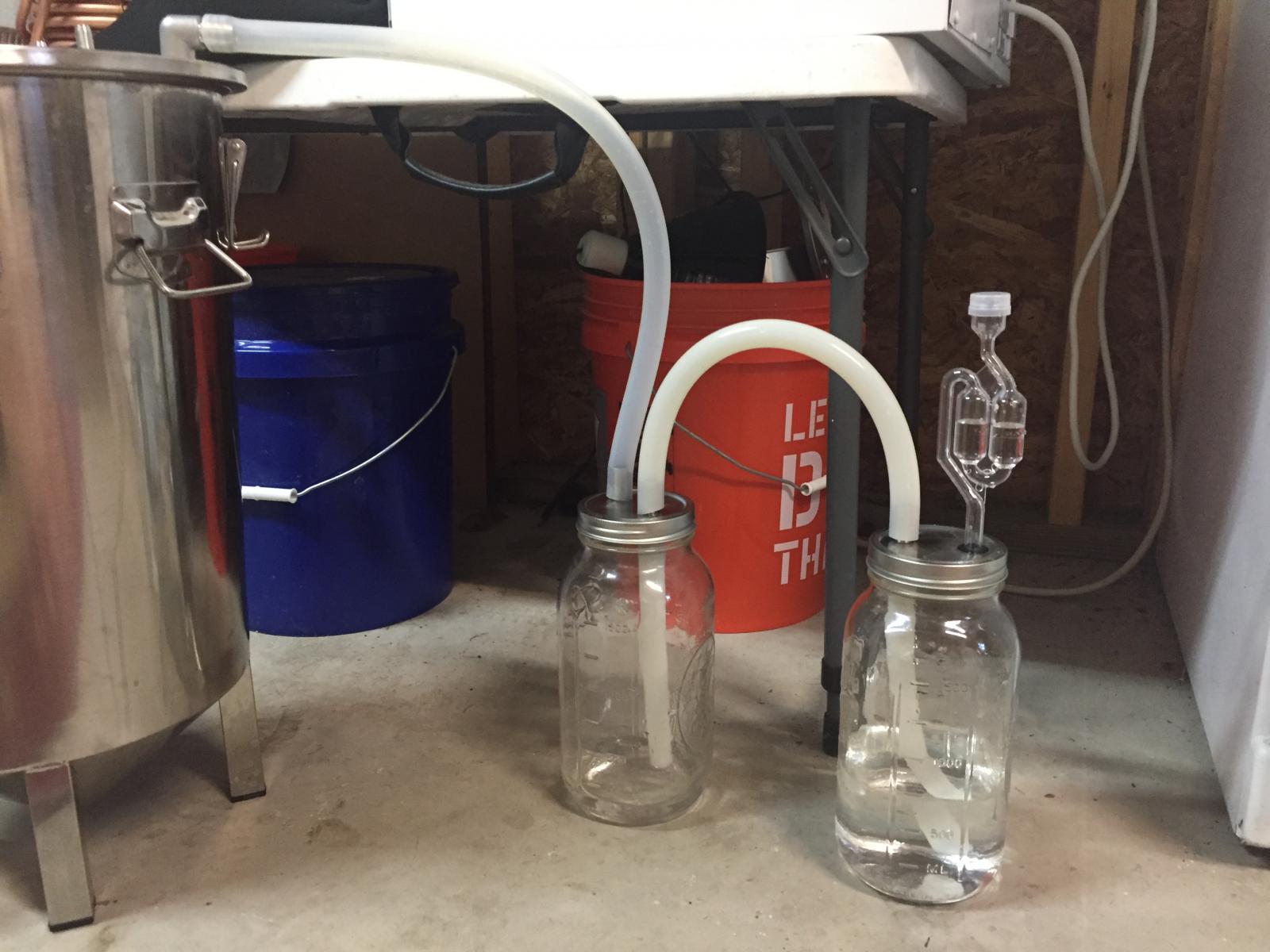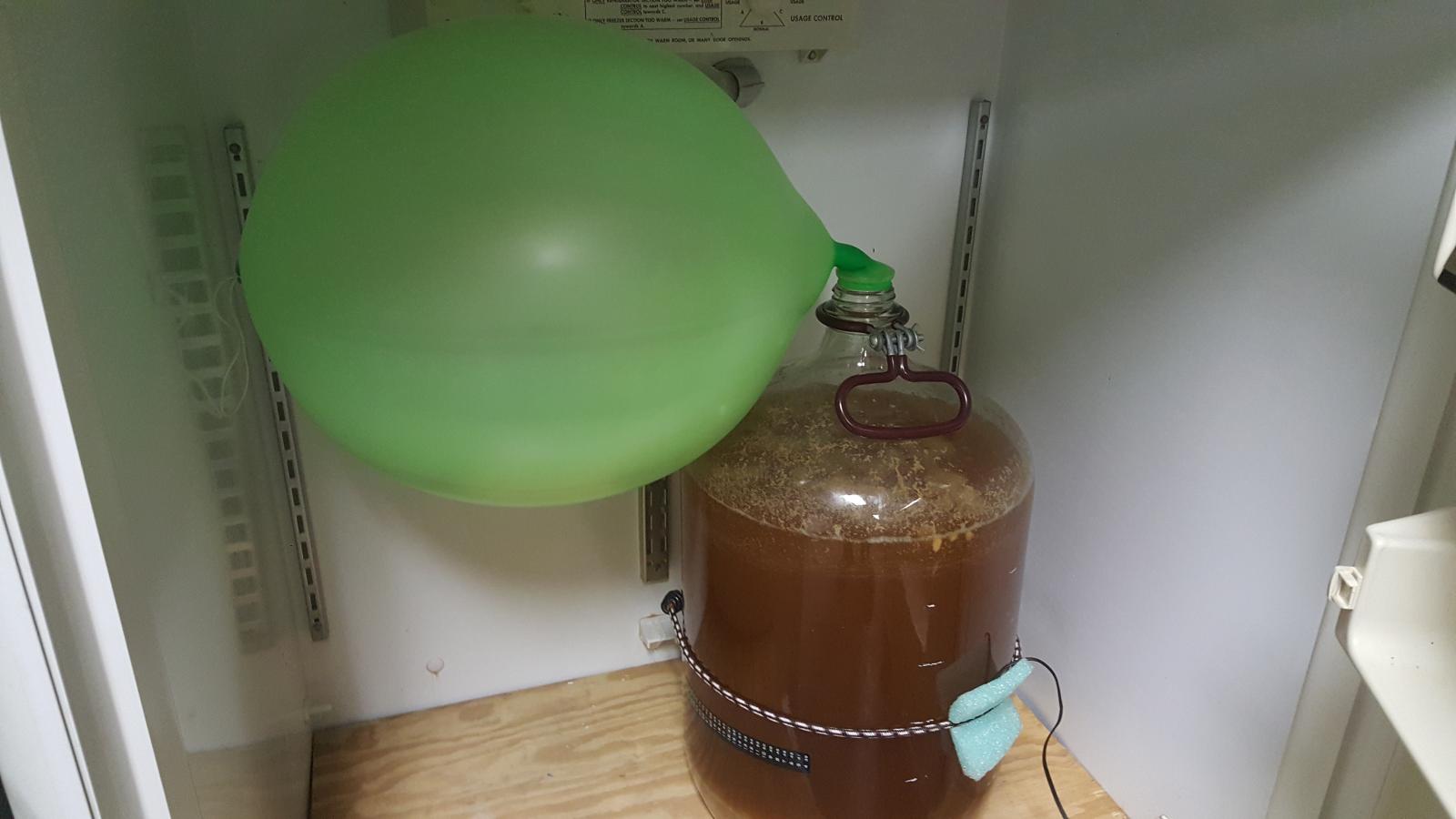Quasinovo1
Member
- Joined
- Nov 16, 2016
- Messages
- 16
- Reaction score
- 8
I have two of the 7G Ss Brew Buckets with FTSs cooling systems and have been using frozen water bottles in a cooler. Recently I bought a glycol chiller to replace the water bottles...thank goodness!
.......
I need to apply positive CO2 pressure in the headspace to offset the negative pressure created in the fermenter. What if I apply light CO2 pressure thru the BO tube, then clamp off the tube while crashing? Or...fill a bread bag with CO2 (Mongoose33 good idea), tape it to the BO tube and use that for a bladder to draw from? Just concerned that O2 will get in the fermenter if this is not done carefully.
Are there other techniques I may be overlooking? Thanks!!
I have a 14G SS Brew Bucket and I always apply a slight positive CO2 pressure when cold crashing. I simply remove the BO tube from the elbow and connect a hose that adapts to a hose from a CO2 regulator. I set the CO2 regulator just above 0 PSI but under 2 PSI and let it crash. I have never had a problem with this technique. Obviously, the CO2 reg has to be set very low or you'll blow the lid off of the brew bucket. I'm travelling at the moment and don't remember the exact dimensions of the lid for the 14G bucket, but at 2 PSI you are in the ballpark of 500 lbs of pressure on the lid. It could be real exciting if you experience regulator creep ;-)















![Craft A Brew - Safale S-04 Dry Yeast - Fermentis - English Ale Dry Yeast - For English and American Ales and Hard Apple Ciders - Ingredients for Home Brewing - Beer Making Supplies - [1 Pack]](https://m.media-amazon.com/images/I/41fVGNh6JfL._SL500_.jpg)













































 and I'm not quite convinced that during a crash that the flow would be laminar. When producing a temperature differential of 30 degrees (assuming ale temp of 66 and capacity to get nearly to FP with glycol) within a short time period I would think the velocity of air relative to the headspace would be somewhat turbulent and there will not be a homogeneous layer of CO2. But thats just my thoughts I'm not a physicist
and I'm not quite convinced that during a crash that the flow would be laminar. When producing a temperature differential of 30 degrees (assuming ale temp of 66 and capacity to get nearly to FP with glycol) within a short time period I would think the velocity of air relative to the headspace would be somewhat turbulent and there will not be a homogeneous layer of CO2. But thats just my thoughts I'm not a physicist and maybe I'll use this example when I'm teaching the combined gas law for CHE101 haha
and maybe I'll use this example when I'm teaching the combined gas law for CHE101 haha